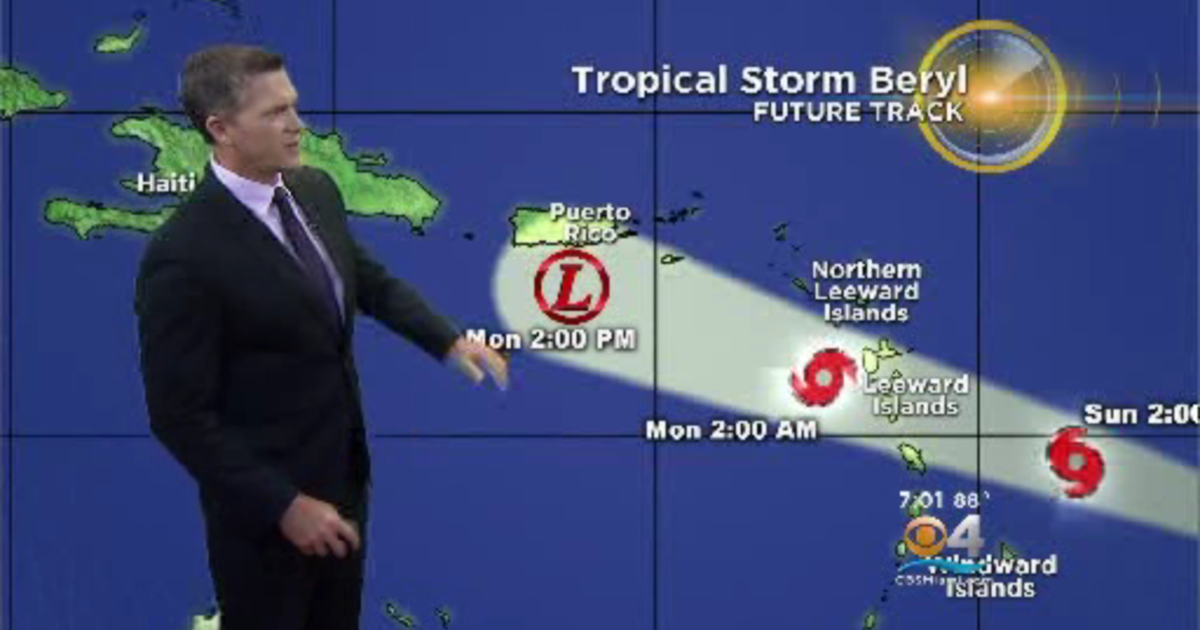Historical Impact of Hurricane Beryl in Jamaica: Jamaica Beryl Hurricane
:quality(70)/d1hfln2sfez66z.cloudfront.net/11-12-2019/t_423d5e2948964ee2aff5c801c5f08a9b_name_CB725C2ADED4425FB11D26B8BA968321_1.jpg)
Jamaica beryl hurricane – In July 2018, Hurricane Beryl made landfall in Jamaica as a Category 1 hurricane, bringing torrential rains and strong winds that caused widespread damage and disruption. The storm’s trajectory took it across the island, from the eastern parishes to the western regions.
The fury of Hurricane Beryl unleashed its wrath upon Jamaica, leaving a trail of destruction in its wake. As the storm raged, Ryan Clark , a renowned meteorologist, provided invaluable insights and updates, helping Jamaicans navigate the treacherous waters of the storm.
With his expertise and unwavering dedication, Clark played a vital role in keeping the people of Jamaica informed and safe during the tumultuous hurricane.
Infrastructure and Property Damage, Jamaica beryl hurricane
The hurricane’s strong winds and heavy rainfall led to significant damage to infrastructure and property across Jamaica. Roads were blocked by fallen trees and debris, disrupting transportation and communication networks. Buildings, including homes, businesses, and schools, sustained damage ranging from broken windows and damaged roofs to complete destruction.
The relentless winds of Hurricane Beryl tore through Jamaica, leaving a trail of destruction in its wake. Amidst the chaos, a beacon of hope emerged from an unexpected source. The rhythmic melodies of North Korean K-pop filled the air, offering solace to those battered by the storm.
As the hurricane’s fury subsided, the music continued to play, a reminder of the resilience that binds us together.
Environmental Impact
Hurricane Beryl also had a significant impact on Jamaica’s environment. The heavy rains caused flooding in low-lying areas, leading to mudslides and landslides that damaged vegetation and disrupted ecosystems. The storm also uprooted trees and damaged crops, affecting the island’s agricultural sector.
Human Toll
The human toll of Hurricane Beryl was devastating. The storm claimed the lives of at least two people, and many others were injured. Thousands of Jamaicans were displaced from their homes due to flooding and damage to their properties. The storm also caused widespread power outages, leaving many communities without electricity for days.
Preparedness and Response to Hurricane Beryl

Before Hurricane Beryl made landfall, Jamaica implemented several preparedness measures. These included issuing timely warnings and evacuation orders, activating emergency response teams, and securing critical infrastructure.
The effectiveness of the response efforts was evident in the relatively low number of casualties and the swift restoration of essential services. Evacuation plans were implemented efficiently, and emergency services, such as search and rescue teams and medical personnel, were rapidly deployed to affected areas.
However, areas for improvement in future hurricane preparedness were identified. These include enhancing early warning systems, strengthening building codes, and increasing community resilience through education and awareness campaigns.
Recovery and Rebuilding After Hurricane Beryl

The aftermath of Hurricane Beryl presented numerous challenges for the people of Jamaica. The destruction of homes, businesses, and infrastructure left many without shelter, livelihoods, and essential services. The recovery and rebuilding process was complex and protracted, requiring significant resources and international assistance.
Challenges Faced During Recovery and Rebuilding
- Extensive damage to housing, requiring the construction of new homes and repairs to damaged ones.
- Disruption of electricity, water supply, and transportation networks, hindering daily life and economic activities.
- Displacement of people from their homes, leading to temporary shelters and overcrowding.
li>Loss of agricultural crops and livestock, impacting food security and livelihoods.
Financial Assistance and Resources
The Jamaican government and international organizations provided financial assistance and resources to support recovery and rebuilding efforts. This included:
- Emergency aid from the World Bank and other international organizations for immediate relief.
- Government funding for housing repairs and construction, as well as infrastructure restoration.
- Loans and grants to businesses affected by the hurricane to help them resume operations.
- Technical assistance from international organizations to strengthen disaster preparedness and response.
Long-Term Impacts on Jamaica’s Economy and Infrastructure
Hurricane Beryl had significant long-term impacts on Jamaica’s economy and infrastructure. The damage to businesses and agricultural production resulted in economic losses and unemployment. The destruction of infrastructure, such as roads and bridges, hindered transportation and trade. The recovery and rebuilding process required significant financial resources, which diverted funds from other development projects.
However, the hurricane also prompted a reassessment of Jamaica’s disaster preparedness and response measures. The government invested in strengthening building codes and improving early warning systems. These measures have helped to reduce the vulnerability of communities to future hurricanes and other natural disasters.